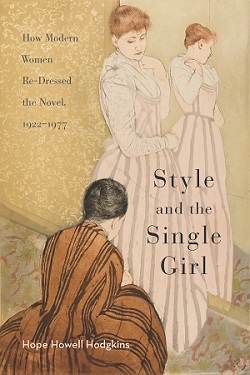Style and the Single GirlHow Modern Women Re-Dressed the Novel, 1922–1977Hope Howell Hodgkins |
 5/09/2016 LITERARY CRITICISM / European / English, Irish, Scottish, Welsh LITERARY CRITICISM / Women Authors ART / Fashion 312 pp. 6x9  $84.95 cloth 978-0-8142-1301-8 Add cloth to shopping cart $34.95 paperback 978-0-8142-5268-0 Add paperback to shopping cart $29.95 PDF eBook 978-0-8142-7453-8 Add PDF to shopping cart Shopping Cart Instructions Review/Change Shopping Cart & Check-out | |||
|
Explore More Imperial War Museum - Clothes Rationing Crossings in Text and Textile (Project Muse) |
“Hodgkins weaves a finely grained and always interesting argument. The methodology is both sophisticated and eclectic. I view Style and the Single Girl as a worthy contribution to the fields of feminist studies, gender studies, fashion studies, and histories of twentieth-century British fiction.” —Jessica Feldman, University of Virginia “Due to its unusual blend of authors, Style and the Single Girl will offer new insights on how to read the expanding canon of twentieth-century women writers. Hodgkins’s prose style is engaging, elegant, and fluid.” —Vike Martina Plock, University of Exeter Style and the Single Girl by Hope Howell Hodgkins reveals how four very different single-girl novelists employed modern modes to re-dress the traditional English marriage plot. In the first monograph to use fashion theory and history to trace the literary progress of British women in later modernity, Hodgkins argues that correspondences between a gendered sartorial style and a gendered literary style persisted throughout the modern era. She demonstrates how those correspondences did not fade but became fraught as women matured in the sharply gendered crucible of war. Hodgkins delineates how in the 1920s and 1930s, popular novels by Dorothy Sayers and high-art fiction by Jean Rhys used dress to comment wittily and bitterly on gender relations. During World War II, changes in British Vogue and compromises made by the literary journal Horizon signaled the death of modernist styles, as Elizabeth Bowen’s gender-bent wartime stories show. Then demure and reserved postwar styles—Dior’s curvy New Look, the Movement’s understated literary irony—were intertwined in the fictions of Barbara Pym and Muriel Spark, who re-dressed the novel with a vengeance. Whether fashioning detective fiction, literary impressionism, or postwar comedy, these novelists used style in every sense to redefine that famous question, “What do women want?” Hope Howell Hodgkins teaches English, American, and European literatures at the University of North Carolina at Greensboro. | |||

